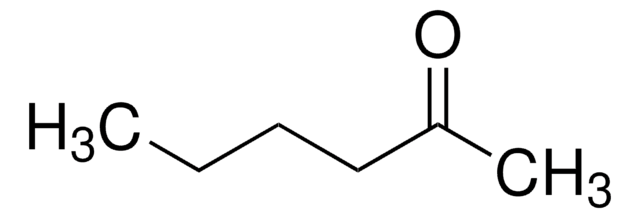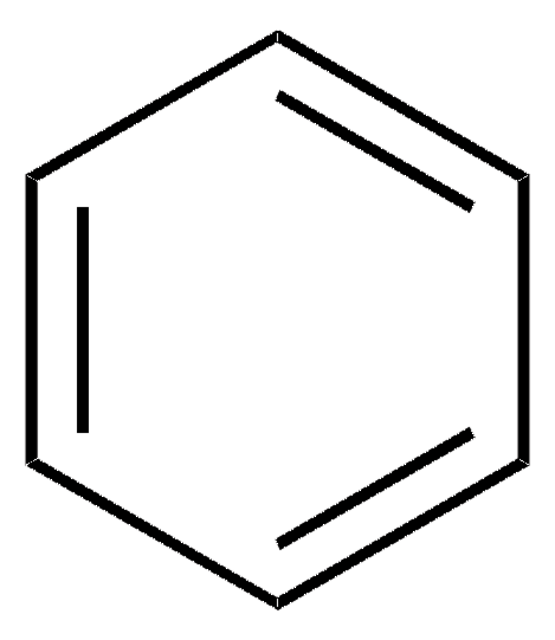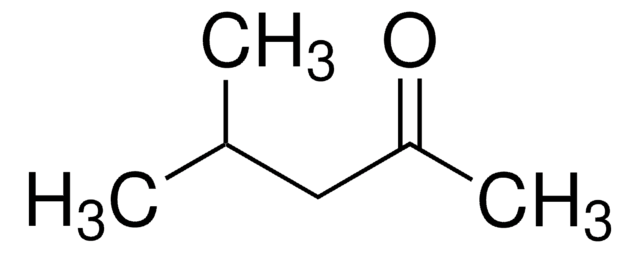Kluczowe dokumenty
47733-U
2-Hexanone
analytical standard
Synonim(y):
Butyl methyl ketone
About This Item
Polecane produkty
klasa czystości
analytical standard
Poziom jakości
agency
ASTM® D5580
ciśnienie pary
10 mmHg ( 39 °C)
Certyfikat analizy
current certificate can be downloaded
opakowanie
pkg of 5 mL
metody
HPLC: suitable
gas chromatography (GC): suitable
współczynnik refrakcji
n20/D 1.401 (lit.)
bp
127 °C (lit.)
mp
−57 °C (lit.)
gęstość
0.812 g/mL at 25 °C (lit.)
Zastosowanie
cleaning products
cosmetics
food and beverages
personal care
petroleum
Format
neat
temp. przechowywania
2-30°C
ciąg SMILES
CCCCC(C)=O
InChI
1S/C6H12O/c1-3-4-5-6(2)7/h3-5H2,1-2H3
Klucz InChI
QQZOPKMRPOGIEB-UHFFFAOYSA-N
Szukasz podobnych produktów? Odwiedź Przewodnik dotyczący porównywania produktów
Opis ogólny
Zastosowanie
Informacje prawne
Hasło ostrzegawcze
Danger
Zwroty wskazujące rodzaj zagrożenia
Zwroty wskazujące środki ostrożności
Klasyfikacja zagrożeń
Flam. Liq. 3 - Repr. 2 - STOT RE 1 - STOT SE 3
Organy docelowe
Central nervous system
Kod klasy składowania
3 - Flammable liquids
Klasa zagrożenia wodnego (WGK)
WGK 1
Temperatura zapłonu (°F)
73.4 °F - closed cup
Temperatura zapłonu (°C)
23 °C - closed cup
Środki ochrony indywidualnej
Eyeshields, Faceshields, Gloves, type ABEK (EN14387) respirator filter
Wybierz jedną z najnowszych wersji:
Masz już ten produkt?
Dokumenty związane z niedawno zakupionymi produktami zostały zamieszczone w Bibliotece dokumentów.
Protokoły
US EPA Method 8260: GC Analysis of Volatiles on SPB®-624 after Purge & Trap using "K" Trap, Fast GC Analysis
Nasz zespół naukowców ma doświadczenie we wszystkich obszarach badań, w tym w naukach przyrodniczych, materiałoznawstwie, syntezie chemicznej, chromatografii, analityce i wielu innych dziedzinach.
Skontaktuj się z zespołem ds. pomocy technicznej









